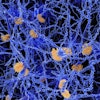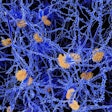
The U.S. Preventive Services Task Force (USPSTF) essentially has reaffirmed its previous guidance on asymptomatic bacteriuria screening. In a recommendation statement published September 24 in the Journal of the American Medical Association, the USPSTF continued to recommend screening for asymptomatic bacteriuria in pregnant women with urine culture and continued not to recommend screening of nonpregnant adults.
The USPSTF changed its grade for screening pregnant women from an A to a B based on how previous evidence has become less practical and useful. That evidence included outdated antibiotic treatments. More recent evidence and systematic review show that there is a significantly lower risk of getting pyelonephritis than found in previous reviews.
Meanwhile, unchanged is the USPSTF recommendation not to screen for asymptomatic bacteriuria among nonpregnant adults, which has had a D grade since 2004 (JAMA, September 24, 2019, Vol. 322:12, pp. 1188-1194).
Since 1996, the USPSTF had maintained an A recommendation for one-time screening for asymptomatic bacteriuria with urine culture in pregnant women between 12 and 16 weeks of gestation. However, more recent evidence, such as the lower prevalence of pyelonephritis and a better understanding of the negative effects of antibiotics, changed the USPSTF's assessment of the certainty (from high to moderate certainty) and net benefit of screening (from substantial to moderate net benefit), generating the change in grade.
So, after reviewing the evidence, the USPSTF concluded with "moderate certainty" that screening for and treatment of asymptomatic bacteriuria in pregnant women has a "moderate net benefit" in reducing perinatal complications.
The grade B recommendation covers urine culture screening for asymptomatic bacteriuria. The USPSTF recommends that screening be performed among pregnant women only during the 12-week to 16-week gestation period, or at their first prenatal visit.
Add to this a backdrop of growing concerns over the use of antibiotics and the potential for antimicrobial resistance and possibly harmful alterations to the microbiome. Such issues caused the USPSTF to reduce assessments of the certainty and magnitude of benefit for screening, which generated the change of grade.
Challenges to change
Despite the change in recommendations by the USPSTF, translating actual changes into medical practice is a challenge: The issue is how to get physicians to conform to the updated guidelines. In an accompanying editorial published online September 24 in JAMA Internal Medicine, Drs. Jerome Leis and Christine Soong from the University of Toronto wrote that broad changes will be needed to undo the culture of culturing urine that has dominated clinical practice for many years.
One approach could involve laboratory-based interventions that place less emphasis on the results of urine cultures, which, in turn, would alter physician prescribing practices, Leis and Soong wrote. Research has shown that changing the threshold for routinely reporting low-risk urine cultures can significantly lessen antimicrobial prescribing for asymptomatic bacteriuria without leading to any adverse events, they noted.
Moreover, continuing medical education should focus on a "more reflective approach" to clinical practice, which would entail giving careful consideration to other reasons for complex medical issues rather than just urinary tract infections, according to Leis and Soong.
In another editorial, this time in JAMA Network Open, U.S. Department of Veterans Affairs Drs. Kalpana Gupta and Barbara Trautner, PhD, suggested that behavioral interventions could nudge clinicians toward the right course of action. And interventions based on evidence-based activities could also be effective.
For instance, Medicare conceivably could stop paying for unneeded urine cultures, based on how the USPSTF is discouraging screening urine cultures in asymptomatic patients, Gupta and Trautner wrote. They cited the 2008 policy change by which Medicare stopped paying for costs associated with hospital-acquired infections, such as catheter-associated urinary tract infections (CAUTIs). In response as a positive intervention, national CAUTI-reduction programs were launched, which generated a lasting and sustained reduction in rates of this infection by decreasing unnecessary urine cultures in asymptomatic patients.
The original 1996 recommendation was reaffirmed in 2004 and again in 2008, according to the published recommendation statement. In 1996, the USPSTF had determined there was insufficient evidence to recommend for or against screening in older adult women, or in women with diabetes. In a separate recommendation, screenings were not recommended in other asymptomatic adults or older adults who reside in an institution. These separate recommendations were combined into a single recommendation against screening in 2004, and this was reaffirmed in 2008.



















